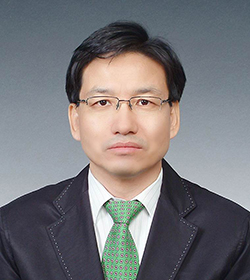On March 17, Professor Hak-Sung Kim from the Department of Biological Sciences at KAIST and Professor Sungchul Hohng from the Department of Physics at Seoul National University published the findings from their joint research on the mechanism of biomolecular recognition by proteins on the online journal Nature Chemical Biology. The results prove the 50-year-long hypothesis on how proteins with intrinsic dynamics bind to ligands of biomolecules. Due to the study, it has become possible to better understand the proteins’ ability to administer biomolecule levels and therefore is expected to play a critical role in the study of complex biological mechanisms. Furthermore, the study will contribute to areas involving the protein biomolecule recognition mechanism (PBRM) such as pathology and aid in development of high-performance drugs.

Biomolecules, such as nucleic acids and proteins, are necessary to construct biological structure, functionality, and information transfer systems. In particular, proteins play the largest role in maintaining and controlling biological mechanisms by specifically recognizing and bonding with such biomolecules. Errors in the mechanisms are critical enough to induce diseases.
The research team focused on the dynamic equilibrium between the protein’s most stable open form and the less stable, partially closed form. Professor Kim’s team continuously monitored the morphing of protein as it bonded to biomolecules at the molecular level to explain PBRM; thereby the results showed for the first time that biomolecules prefer to bond with the most stable protein and shift the proteins to the lowest energy state, the closed form, as they bond. Additionally, the team found that biomolecules also bond with partially closed forms of proteins, which also lead to the closed form.
The study is the first case to experimentally prove the “Induced Fit” model and the “Conformation Selection” model of the PBRM. Professor Kim claims the study is the “first direct proof of the PBRM through analyzing the change of structural transformation rate of proteins at the molecular level” and “for the first time in the world, [the study] experimentally solved a seemingly unsolvable mystery taught in biology textbooks for 50 years as a mere theory.”

